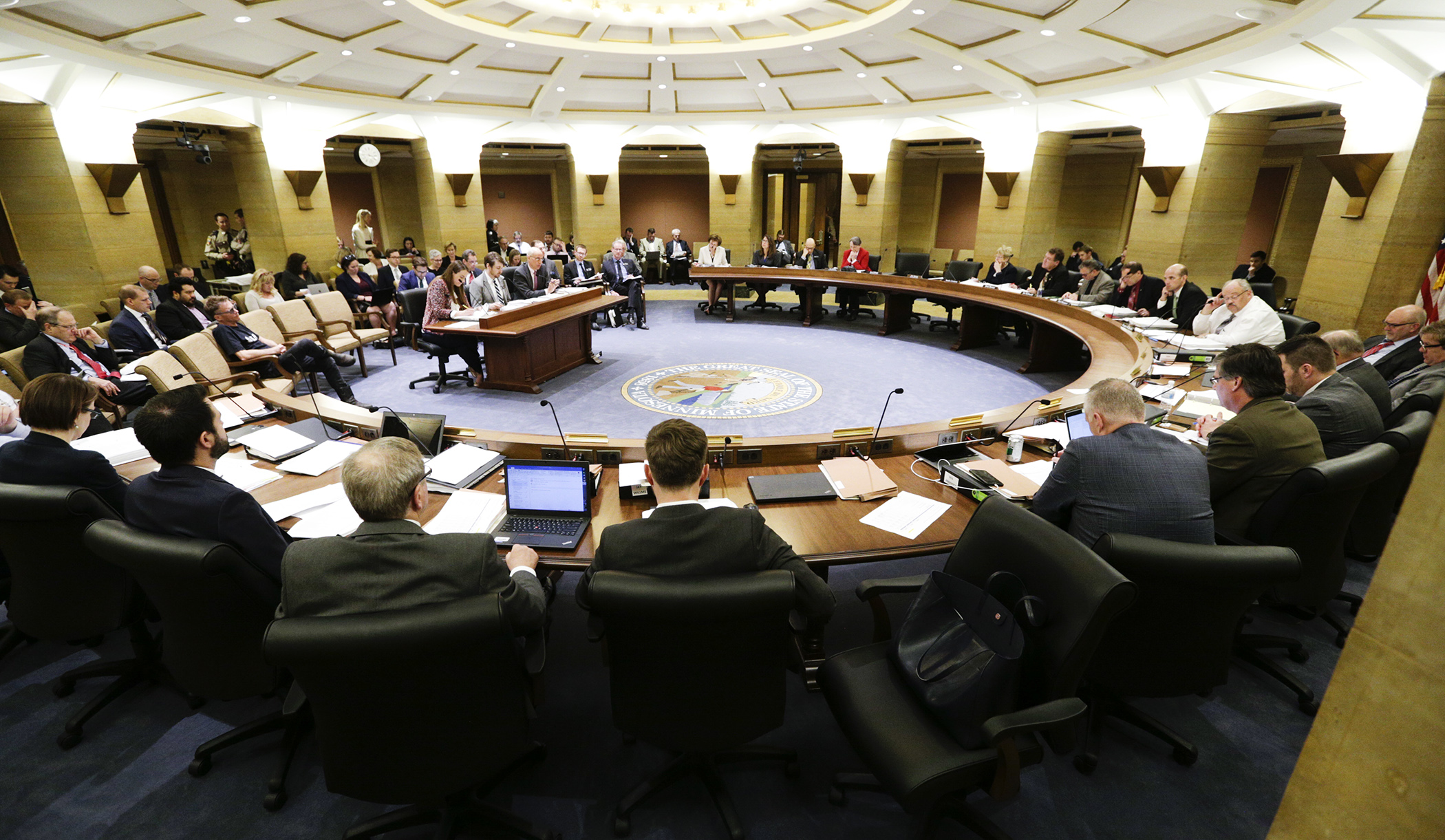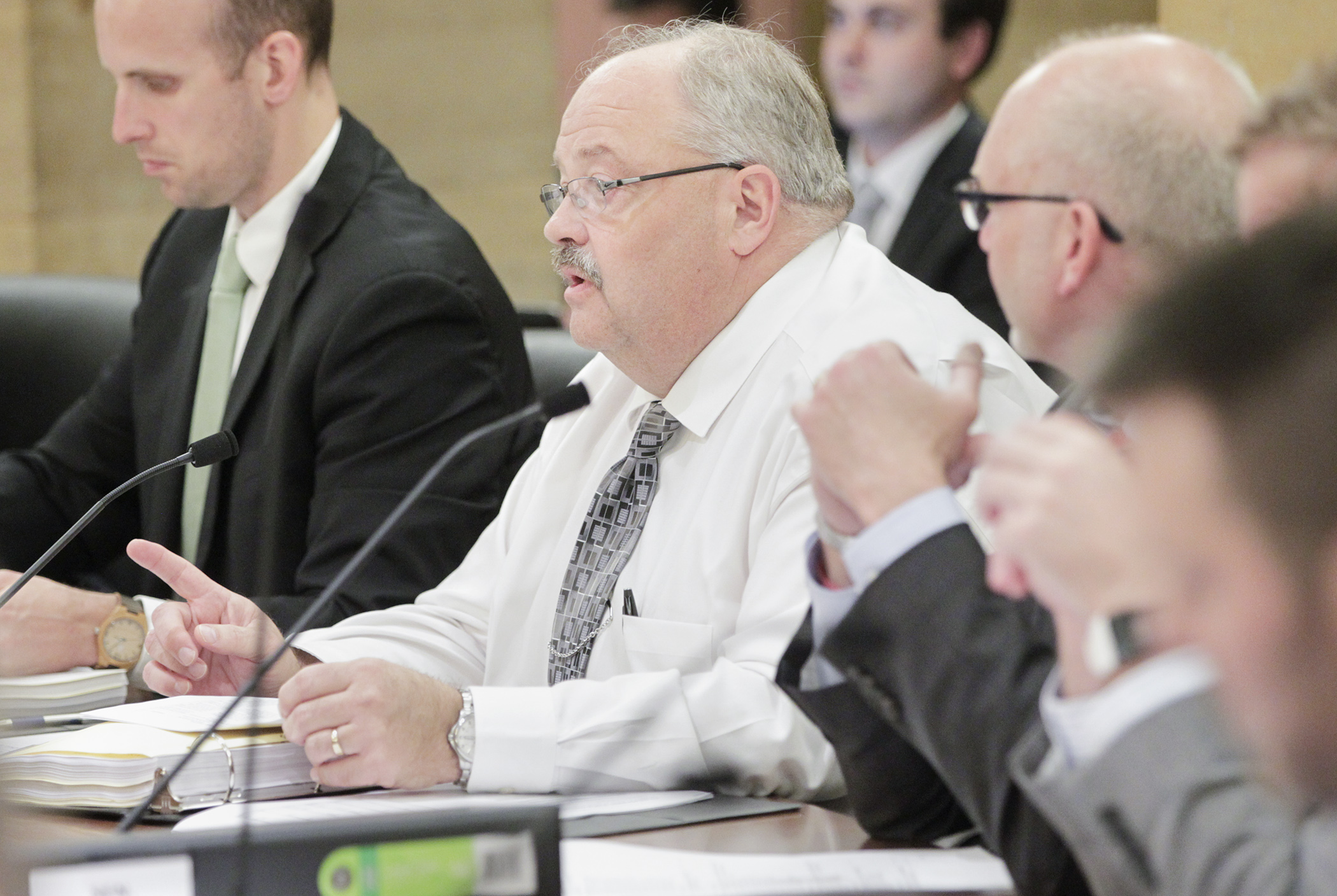Conference committee begins work on a tax conformity fix

With only 12 days left in the legislative session and a federal tax conformity crisis looming, the omnibus tax conference committee met Wednesday with the goal of quickly sending a palatable bill to Gov. Mark Dayton’s desk.
The 10 conferees spent their first meeting outlining the conflicting language in HF4385*/SF4010.
The primary differences are a number of provisions aligning state income taxes to the federal tax code, following the Tax Cut and Jobs Act of 2017. If the Legislature fails to address tax conformity this session, Minnesota faces a $60 million increase in state income taxes for more than 300,000 families.
Both bills offer tax cuts to individuals, but by different means.
The House plan would lower the second-tier rate from 7.05 percent to 6.75 percent by Fiscal Year 2020. Those second-tier cuts would affect individuals annually earning between $25,890 and $85,060 and married couples earning between $37,850 and $150,380.
 Rep. Greg Davids, chair of the House Taxes Committee, looks on as staff begins a side-by-side overview of the omnibus tax bill at the first meeting of the conference committee May 9. Photo by Paul Battaglia
Rep. Greg Davids, chair of the House Taxes Committee, looks on as staff begins a side-by-side overview of the omnibus tax bill at the first meeting of the conference committee May 9. Photo by Paul BattagliaThe Senate plan, however, would lower the first-tier rate from 5.35 percent to 5.1 percent by Fiscal Year 2020. The first-tier cuts would affect individuals earning up to $24,270 and married couples earning up to $35,480 annually. The Senate bill also would automatically lower rates when the state experiences a budget surplus.
In regards to corporate tax rates, the House plan would lower the corporate franchise tax and eliminate the alternative minimum tax, while the Senate plan wouldn’t change corporate rates. The House also includes a repatriation provision that would tax a corporation’s foreign profits. The Senate does not.
Outside of tax conformity, each bill includes separate sales tax and property tax exemptions.
The House proposal would result in a $109 million revenue reduction to the General Fund for the 2018-19 biennium, and a $16 million reduction in the 2020-21 biennium.
The Senate proposal offers a $171 million revenue reduction to the General Fund in the 2018-19 biennium, and a $94 million reduction in the 2020-21 biennium.
The governor’s proposal, which would expand a number of income tax credits instead of altering individual or corporate tax rates, presents a $12 million revenue increase in the 2018-19 biennium, and a $409 million increase in the 2020-21 biennium. The governor’s plan would continue the health care provider tax and reinstate some taxes eliminated last year.
Dayton has said he would prefer not to get involved in negotiations between the two chambers and hopes the committee will present him with a unified bill.
Related Articles
Search Session Daily
Advanced Search OptionsPriority Dailies
Speaker Emerita Melissa Hortman, husband killed in attack
By HPIS Staff House Speaker Emerita Melissa Hortman (DFL-Brooklyn Park) and her husband, Mark, were fatally shot in their home early Saturday morning.
Gov. Tim Walz announced the news dur...
House Speaker Emerita Melissa Hortman (DFL-Brooklyn Park) and her husband, Mark, were fatally shot in their home early Saturday morning.
Gov. Tim Walz announced the news dur...
Lawmakers deliver budget bills to governor's desk in one-day special session
By Mike Cook About that talk of needing all 21 hours left in a legislative day to complete a special session?
House members were more than up to the challenge Monday. Beginning at 10 a.m...
About that talk of needing all 21 hours left in a legislative day to complete a special session?
House members were more than up to the challenge Monday. Beginning at 10 a.m...